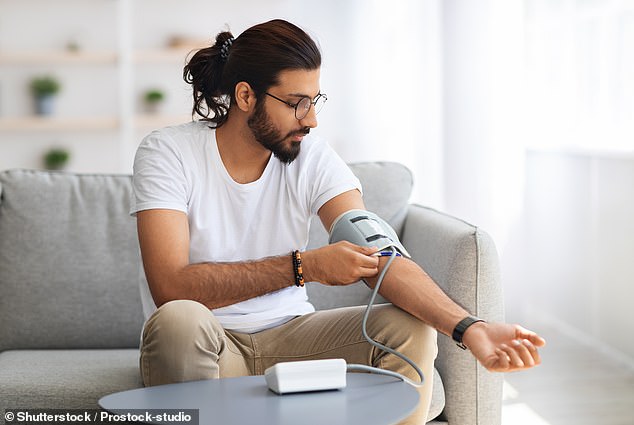How just FIVE minutes of exercise a day could lower blood pressure and help to stave off heart problems
Just five minutes of exercise a day can lower blood pressure and help prevent heart problems, research shows.
Adding short exercises to your daily routine (such as taking the stairs or cycling) can reduce the readings.
Experts say small lifestyle changes, such as watching TV for five minutes instead of running for five minutes, are enough to significantly improve heart health.
The findings suggest that activities that increase heart rate, such as dancing, running or even rigorous cleaning, have the greatest benefits.
Researchers from University College London (UCL) and the University of Sydney studied 14,761 people wearing activity trackers to analyze the relationship between daily exercise and blood pressure.
During the 24 hours, people spent an average of about seven hours sleeping, 10 hours doing sedentary behavior such as sitting, three hours standing, one hour of slow walking, one hour of fast walking, and 16 minutes of exercise that increased their heart rate, such as running. and cycling.
Just five minutes of exercise a day can lower blood pressure and help prevent heart problems, research shows (File Image)

Adding short exercises to your daily routine (such as taking the stairs or cycling) can reduce the readings (File image)
An additional five minutes of heart rate-raising exercise such as climbing stairs, running or cycling – in exchange for some other behavior – was found to lower systolic blood pressure (SBP) by 0.68 millimeters of mercury (mmHg) and diastolic blood pressure. blood pressure (DBP) with 0.54 mmHg2.
Systolic is the top number in a blood pressure reading and represents the pressure when the heart pumps blood through the body. Diastolic is the bottom number and is the pressure when the heart rests between beats.
At the population level, a 2 mmHg reduction in SBP and a 1 mmHg reduction in DPB corresponds to an approximately 10 percent reduction in heart disease risk, the researchers said.
This could be achieved by reallocating 20-27 minutes of other behaviors to exercise for the top number, and 10-15 minutes for the bottom number, according to the study published in Circulation.
For example, with systolic blood pressure, swapping 21 minutes of sitting, 22 minutes of standing, or 26 minutes of slow walking for exercises such as cycling or jogging would have this effect.
For diastolic blood pressure, the benefits would come from trading 10 minutes of brisk walking, 11 minutes of sitting or 13 minutes of sleep for good exercise.
High blood pressure is the leading cause of strokes and heart attacks in Britain. About 14 million adults are thought to suffer from it, including about five million undiagnosed.
If the heart is not treated, it can enlarge over time due to the increased pressure, making it pump less effectively and leading to heart failure.
Lead author Dr Jo Blodgett from UCL said: ‘Our findings suggest that exercise is the key to lowering blood pressure for most people, rather than less strenuous forms of exercise such as walking.
‘The good news is that, regardless of your physical capabilities, it does not take long for a positive effect on blood pressure to occur.
‘What is unique about our exercise variable is that it includes all exercise-like activities, from climbing stairs to a short bike ride, many of which can be integrated into daily routines.
‘For those who don’t exercise much, walking still had some positive benefits for blood pressure.
‘But if you want to change your blood pressure, increasing the burden on the cardiovascular system through exercise will have the greatest effect.’
